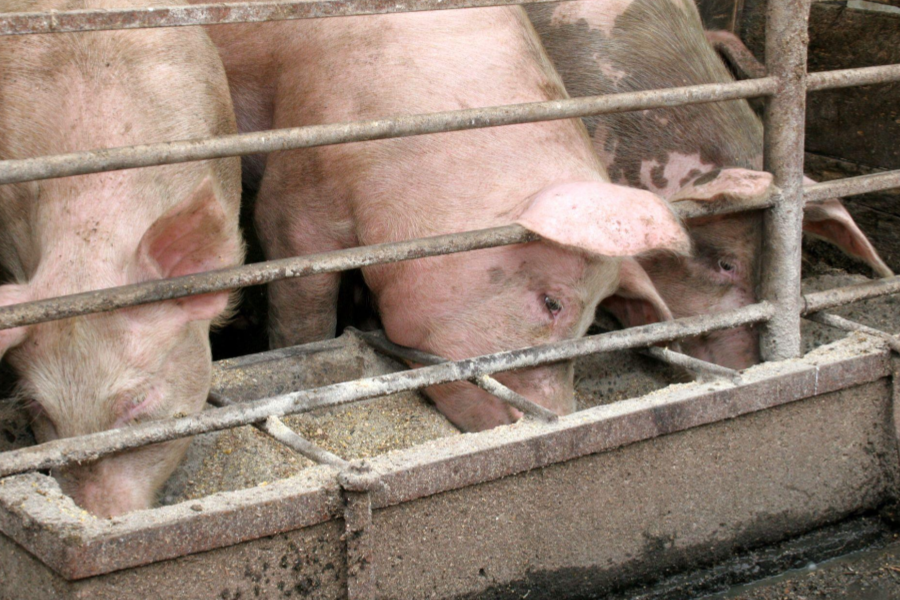



University of Minnesota researchers recently led successful efforts to work on African swine fever virus (ASFV) and developed and validated a surrogate virus for ASFV, a disease that has devastated pig populations and pork production in countries around the world.
The U of M was one of only a handful of facilities in the U.S. to have access to the highly contagious ASFV. The lab’s work represents a major breakthrough in efforts to develop effective mitigation strategies to control ASFV and keep it from entering North America.
In addition to working directly on ASFV, a surrogate virus, Emiliania huxleyi virus (EhV), which is strikingly similar to ASFV in terms of its structure and stability, was proposed and developed in the Schroeder Lab. It can safely be used in field studies to help scientists understand more about how the virus is transmitted in real-world conditions, and what strategies are effective to prevent its spread. One of the main benefits of EhV is its low-risk, because it only infects one specific species of marine algae and poses no harm to humans, plants or animals.
The team, led by Gerald Shurson a professor in the College of Food, Agricultural, and Natural Resource Sciences, and Declan Schroeder an associate professor from the College of Veterinary Medicine, used a novel testing method to measure and compare the two viruses based on their ability to survive and potentially become infectious under various environmental conditions.
The study found both viruses were able to survive temperatures up to an astounding 100 degrees Celsius — the temperature at which water boils. This has significant implications for animal health and feed safety, as it shows that ASFV is much harder to destroy than previously thought, which suggests that current biosecurity protocols in the U.S. may be inadequate.
“The negative impact on the U.S. economy in the event of a foreign animal disease, such as ASFV entering our swine farms, cannot be overstated,” said Schroeder. “Given the possible routes of entry of a foreign animal disease into the U.S., imports of feed and feed ingredients from ASFV-positive countries pose a risk. If a potentially ASFV-contaminated feed ingredient were to enter the U.S., results from our recent 23-day feed transport study that used EhV as a surrogate for ASFV show it continues to be remarkably stable.”
“This is a major breakthrough to reach our goal of accelerating research for understanding the survival of ASFV in various feed ingredients and complete feeds, as well as evaluating the effectiveness of various mitigation strategies to inactivate ASFV in feed and decontamination strategies for feed mills if they were to become contaminated with ASFV,” said Shurson.
With a validated surrogate now available, researchers’ next step is to determine exactly how U.S. protocols should be changed to keep pigs and the feeds they are fed safe.
Funding was provided by the United Soybean Board and the University of Minnesota Imaging Centers.





